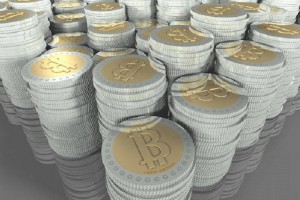Latest Posts
-
Finance 0
EC Apple’s Trek To The Ordinary
Over the past ten months, in steps almost too small to be noticed by the mass media, Apple (AAPL) has shed over two hundred billion dollars in value. That’s nearly one quarter of a trillion dollars in wealth which would have fed shareholder dreams of new houses, new boats, new jewelry, and mink coats, but…it’s gone. The thing is, I think the slide is far, far from over. I wrote a piece earlier this year (which got picked up by some of the mainstream press) predicting that Apple would fall to the mid-70s. We’re already heading into the low 90s, so my goofy prediction is seeming a little less insane. Of course, it wasn’t that long ago...On February 7, 2016 / By Kurt Osterberg -
Finance 0
Insider Weekends-February 7, 2016
Insider buying increased last week with insiders buying $87.63 million of stock compared to $27.94 million in the week prior. Selling also increased with insiders selling $825.55 million of stock last week compared to $267.17 million in the week prior. The market took a turn for the worse last week with the S&P 500 dropping 3.1% for the week. Against this backdrop Kinder Morgan (KMI) declined -4.8% while Consol Energy (CNX) continued rallying with a gain of 14.61% for the week. The big event last week was a drop of $84 or nearly 44% in LinkedIn (LNKD) and “big data” company Tableau Software (DATA) losing half its value with a drop...On February 7, 2016 / By Kurt Osterberg -
Finance 0
Negative Interest Rates
For an economy with underutilized resources or too low a rate of inflation the traditional prescription for monetary policy is to lower the interest rate. Central banks around the world tried to do that in response to stubbornly weak economies, bringing the overnight interest rate in many countries all the way to zero. But when that didn’t seem to be getting the job done, the Bank of Japan last week decided to go negative, charging banks 0.1% interest for excess reserves. With this step Japan now joins the Euro system, Switzerland, Denmark, and Sweden, all of whom have had negative interest rate policies in place for over a year. Here I ...On February 7, 2016 / By Kurt Osterberg -
Finance 0
EUR/USD Rally May Slow As Markets Reassess ECB, Fed Policies
The European Central Bank may now see that it has a problem on its hands. As soon as markets priced out the possibility of the Federal Reserve raising rates in 2016, EUR/USD immediately rallied. The underpinning of EUR/USD’s decline since May 2014 – diverging policy as the Fed looked to raise rates and the ECB looked to loosen policy further – seems to be in question. Yet now that EUR/USD has jumped back towards $1.1200, it’s time to reassess central bank policy on both sides of the pond. Fundamental Forecast for EUR/USD: Neutral First and foremost, it seems that markets are operating around the belief that major central banks wi...On February 7, 2016 / By Kurt Osterberg -
Finance 0
Dot-Com Bubble 2.0 Is Bursting: Tech Stocks Are Already Down Half A Trillion Dollars Since Mid-2015
Do you remember how much stocks went down when the first dot-com bubble burst? Well, it is happening again, and tech stocks are already down more than half a trillion dollars since the middle of 2015. On Friday, the tech-heavy Nasdaq dropped to its lowest level in more than 15 months, and it has now fallen more than 16 percent from the peak of the market.But of course some of the biggest names have fallen much more than that.Netflix (NFLX) is down 37 percent, Yahoo (YHOO) is down 39 percent, LinkedIn (LNKD) is down 60 percent, and Twitter (TWTR) is down more than 70 percent.If you go back through my previous articles, you will find that I s...On February 7, 2016 / By Kurt Osterberg -
Finance 0
Bears Break Deadlock
A quick post before the Superbowl begins. Friday’s action was very disappointing if you were in the bullish camp; poor jobs data contributing to the malaise. However, investors can view this as another buying opportunity, with the Nasdaq clocking the 10% percentile of historic weak prices dating back to 1971, and the Russell 2000 making fast work of a push back to 958. Again, it’s not about investing everything at once, but perhaps using the coming year(?) to build long term positions. I would be happier to see a 40-60% trim from highs – keep an eye on my bottom watch table, but this is the kind of action which helps reset t...On February 7, 2016 / By Kurt Osterberg -
Finance 0
Weak Investor Sentiment Leading To Negative Fund Flows
The weak equity returns experienced by the markets since the beginning of the year have resulted in a low level of bullish investor sentiment. The Dow Jones Industrial Average Index and the S&P 500 Index are down on a year to date basis 7% and 8%, respectively. The Nasdaq Composite Index has fared even worse and is down 12.9% this year. The lack of positive equity momentum and weak bullish sentiment have led to investors reducing exposure to both stocks and bonds as evidenced by recent mutual fund flow data. From The Blog of HORAN Capital Advisors The above chart incorporates data through the end of last year. Below is a table from I...On February 7, 2016 / By Kurt Osterberg -
Finance 0
Bank Of America Admits The U.S. May Already Be In A Recession
Almost one year ago, in March 2015, we explained how “The Fed’s Artificial Steepening Of The Yield Curve” has resulted in many unexpected consequences, the most important of which has been the erroneous interpretation of the yield curve as a leading recessionary signal. As said back then, “the artificially steep yield curve is a reflection of policy intent not economic reality…. Where the yield curve in the all-important belly of the 5s10s might have deeply inverted in the past just prior to recession, there is no justification to expect the same attainment of absolute levels where artificial monetary intrusio...On February 7, 2016 / By Kurt Osterberg -
Finance 0
10 Numbers To Know For China’s New Year
Ahead of the Chinese New Year, China was very much a topic of discussion this week at Harvard Business School, where I attended and participated in a seminar for global CEOs. From eight in the morning until midnight, 150 fellow chief executives and I studied and debated a number of case studies in leadership, marketing, finance and government reform. It was humbling to be in the company of so many world-class leaders and professors from all over the globe. The week-long event took place in Harvard’s Tata Hall, named after Ratan N. Tata, the Indian businessman and global investor. Today the snow fell hard in Boston, and I was lucky to fly ou...On February 7, 2016 / By Kurt Osterberg -
Finance 0
EC 12 Stocks Raising Dividends And Expectations
I am not a stock trader; I am a dividend and value based long-term buy-and-hold investor. When I add a stock to my dividend portfolio, it is my intention to hold the stock forever. I am not smart enough to time the daily gyrations of the stock market. When stock prices start dropping, our primal instinct of flight kicks in and we want to sell. In many cases that is the time to be buying. However, sometimes selling a stock is the right thing to do. In determining when to sell a dividend stock, I have one hard and fast rule: When an individual stock held as a dividend investment lowers its dividend, immediately sell it. Below are several comp...On February 7, 2016 / By Kurt Osterberg
Top Posts
-
 The Importance for Individuals to Use Sustainable Chemicals
The Importance for Individuals to Use Sustainable Chemicals
-
 Small Businesses: Finding the Right Candidate for the Job
Small Businesses: Finding the Right Candidate for the Job
-
 How to Write the Perfect Thank You Letter After Your Job Interview
How to Write the Perfect Thank You Letter After Your Job Interview
-
 3 Best Large-Cap Blend Mutual Funds For Enticing Returns
3 Best Large-Cap Blend Mutual Funds For Enticing Returns
-
 China suspected in massive breach of federal personnel data
China suspected in massive breach of federal personnel data















